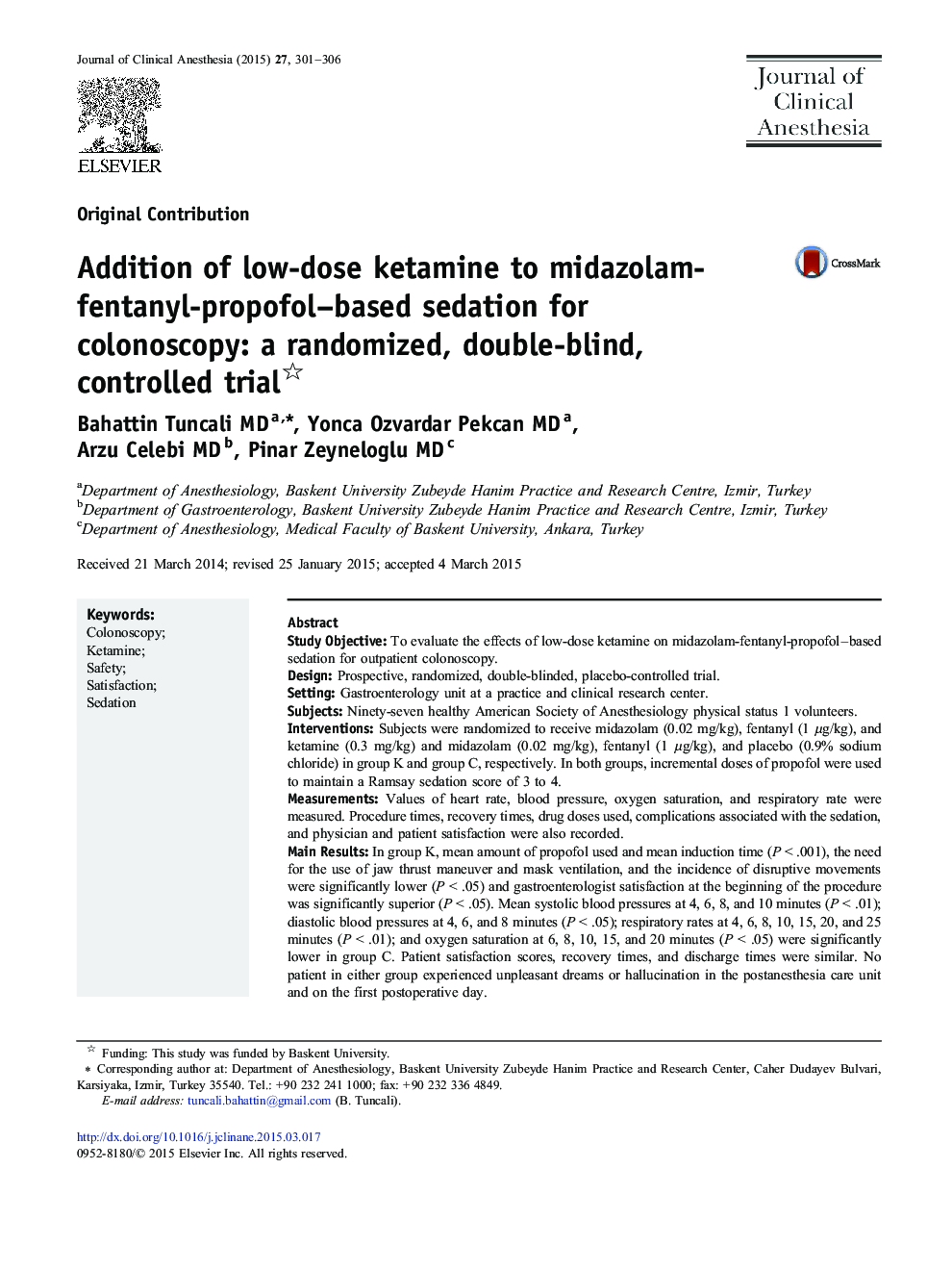| Article ID | Journal | Published Year | Pages | File Type |
|---|---|---|---|---|
| 2762647 | Journal of Clinical Anesthesia | 2015 | 6 Pages |
Study ObjectiveTo evaluate the effects of low-dose ketamine on midazolam-fentanyl-propofol–based sedation for outpatient colonoscopy.DesignProspective, randomized, double-blinded, placebo-controlled trial.SettingGastroenterology unit at a practice and clinical research center.SubjectsNinety-seven healthy American Society of Anesthesiology physical status 1 volunteers.InterventionsSubjects were randomized to receive midazolam (0.02 mg/kg), fentanyl (1 μg/kg), and ketamine (0.3 mg/kg) and midazolam (0.02 mg/kg), fentanyl (1 μg/kg), and placebo (0.9% sodium chloride) in group K and group C, respectively. In both groups, incremental doses of propofol were used to maintain a Ramsay sedation score of 3 to 4.MeasurementsValues of heart rate, blood pressure, oxygen saturation, and respiratory rate were measured. Procedure times, recovery times, drug doses used, complications associated with the sedation, and physician and patient satisfaction were also recorded.Main ResultsIn group K, mean amount of propofol used and mean induction time (P < .001), the need for the use of jaw thrust maneuver and mask ventilation, and the incidence of disruptive movements were significantly lower (P < .05) and gastroenterologist satisfaction at the beginning of the procedure was significantly superior (P < .05). Mean systolic blood pressures at 4, 6, 8, and 10 minutes (P < .01); diastolic blood pressures at 4, 6, and 8 minutes (P < .05); respiratory rates at 4, 6, 8, 10, 15, 20, and 25 minutes (P < .01); and oxygen saturation at 6, 8, 10, 15, and 20 minutes (P < .05) were significantly lower in group C. Patient satisfaction scores, recovery times, and discharge times were similar. No patient in either group experienced unpleasant dreams or hallucination in the postanesthesia care unit and on the first postoperative day.ConclusionsAddition of low-dose ketamine to midazolam-fentanyl-propofol–based sedation for outpatient colonoscopy resulted in more rapid and better quality of sedation, less propofol consumption, more stable hemodynamic status, and less adverse effects with similar recovery times in adult patients.
